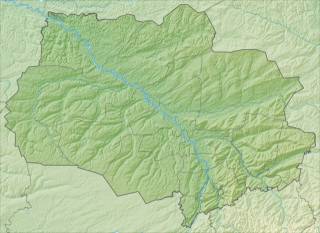Evaluation of the edibility of Volkartia
Of course, Volkartia is an inedible type of mushroom.
Related species
As noted, this is the only genus in the family. But the Protomyceae family includes other closely related genera:
• The genus Protomyces consists of approximately 10-20 species. It includes, for example, Protomyces large-spore, which infects carrots, caraway seeds, angelica, coriander and other umbrella plants. This species grows in Australia, Africa and North America. And in the northern hemisphere, Protomyces pachyderm is widespread, it parasitizes dandelion and other aster;
• The genus Saitoella is represented by yeast fungi that grow in the Himalayas;
• The genus Drilling contains two species - Buerenia cicutae, known in Finland and Drilling floodplaincommon in Western Europe and parasitic on carrots, handguard and celery;
• The genus Tafridium consists of 2 species. The representative of the genus Tafridium umbrella parasitizes on caraway seeds, borschivik, ferula. The umbrella tafridium is found in North America and Eurasia.

Description of volkartia and its internal side
The color of the volkartia is grayish-white. Under the epidermis is an ordered layer of ascogenous cells. These cells are ellipsoidal or spherical in shape, and their size is 20-30 microns.
They sprout with synasks, but they do not have a dormant period. The formation of synasks is the main distinguishing feature of wolkartia, due to which this mushroom cannot be confused with the closely related species Tafridium. And due to the ordered arrangement of ascogenous cells, these fungi differ from representatives of protomyceses, which are characterized by a scattered arrangement of these structures in tissues. In addition, in protomyces, sinusses form after a dormant period.
In wolkartia, the sinusca is ellipsoidal or cylindrical, 44–70 × 20–33 µm in size. They are covered with a colorless shell.

Volcartia ascospores are colorless, their size is 2.5-8 × 2-3 microns, the shape is also ellipsoidal or cylindrical, but sometimes they are slightly curved or straight. Ascorospores can be formed already at the stage of the ascogenous cell. Spores are formed after a dormant period, they germinate with mycelium.
Places of growth of wolkartia
Volkartia is a parasitic fungus. Most often it parasitizes on plants of the Skerda genus. The typical host of this parasite fungus is Crepis blattarioides. The fungus causes the formation of dark spots on the leaves of the plant. Typically, the mushroom is found on both sides of the leaf. One mushroom takes up a fairly large part of the leaf.
This mushroom was first discovered in Germany, in addition, in Europe it is common in Switzerland, France and Finland. Also known in Asia, Kazakhstan.



























